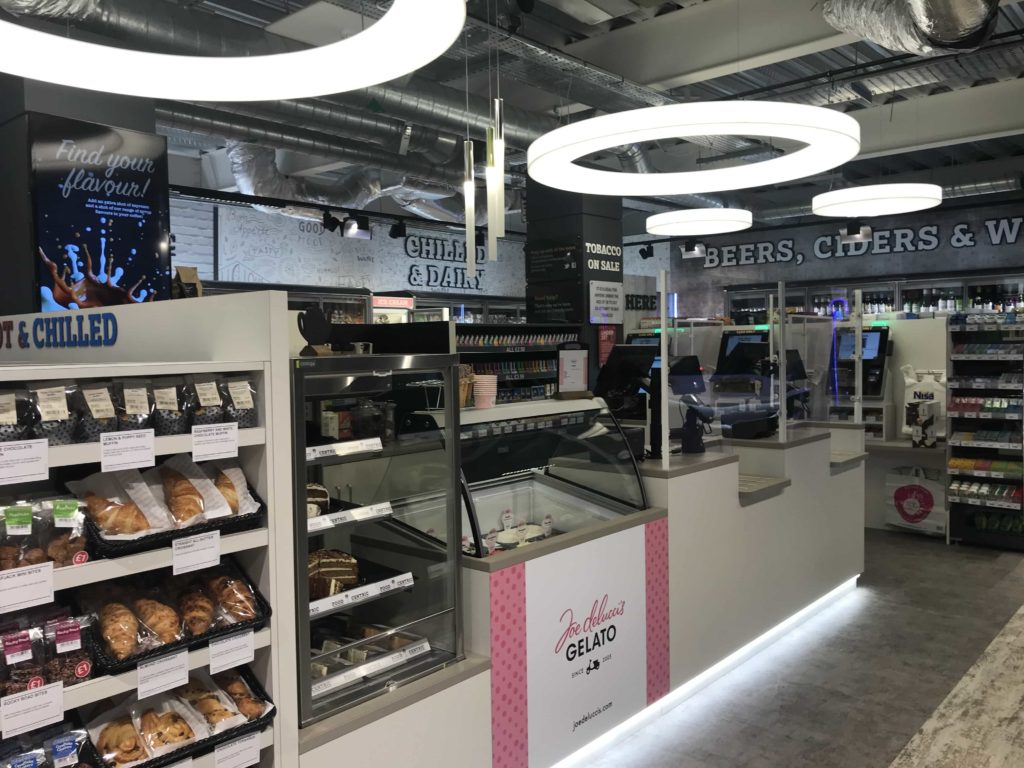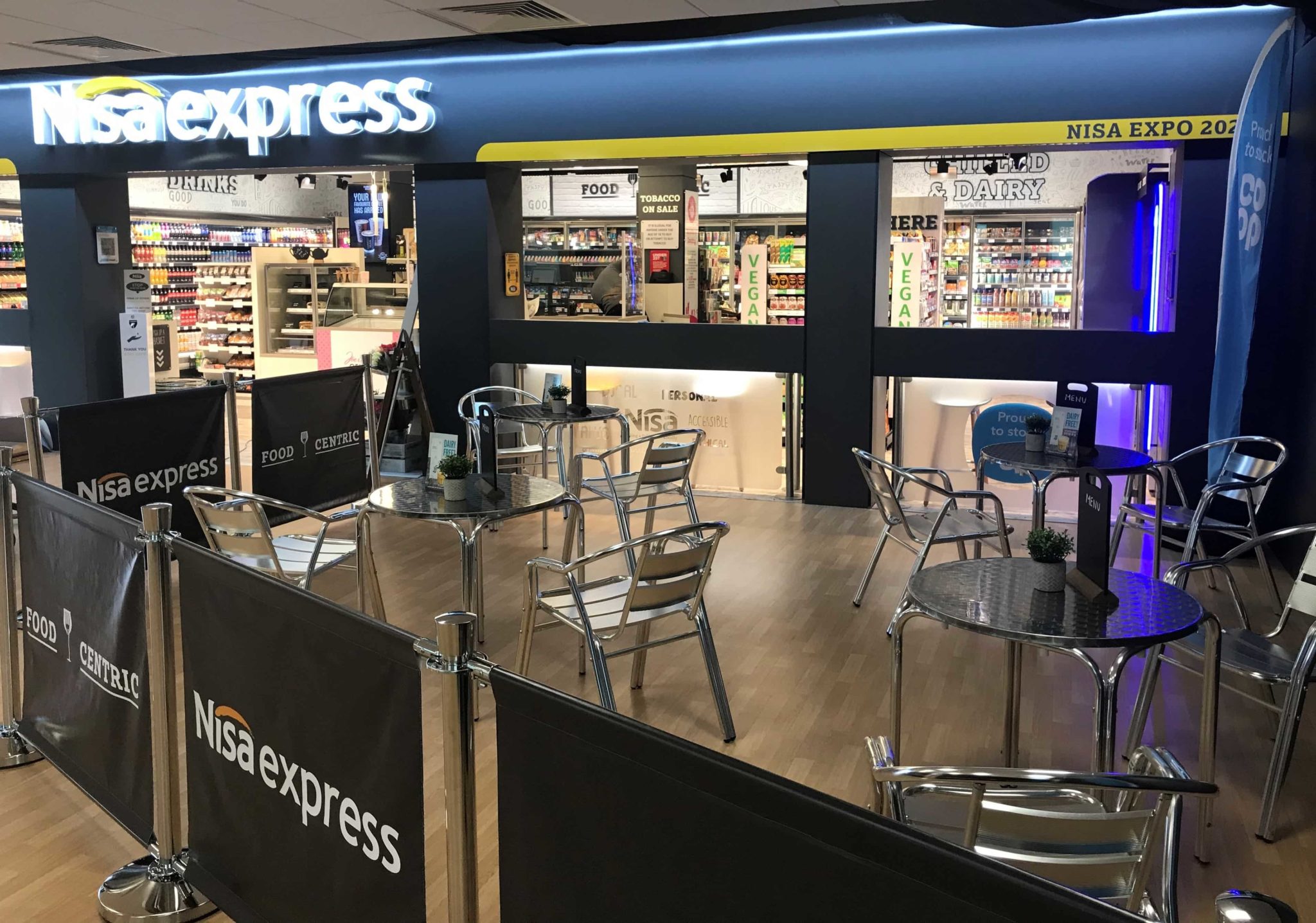Nisa’s new Express fascia will help the brand ‘make a big mark’ in the sub-1,000sq ft store format, according to the group’s senior leadership team.
Speaking to RN ahead of its virtual expo for partners, chief executive Ken Towle, chief operating officer John McNeill and sales director Steve Leach explained what the new fascia has to offer independent retailers.
The new brand, first uncovered by RN in October 2019 will include three variants all designed to operate in locations under 1,000 sq ft whilst still providing a full convenience top-up offer. The chief operating officer told RN it was inspired by “the importance of breadth of range over depth of range” and a focus on fresh.
An ‘essentials’ version for neighbourhood stores looks to help shops make the leap to a wider grocery ranging, a forecourt model is aimed at helping Nisa poach more key accounts and a premium ‘Food centric’ option focuses on ‘food for now’ for city centre locations.

The Co-op’s input had helped make these variants an innovative development in convenience retailing according to Towle. He told RN: “I’m pleased we can take the insight capability and data that comes from being part of a bigger group. What you’re seeing in those 1,000 sq ft is a lot of thinking power.”
McNeill said the focus on the sub-1,000 sq ft shop would fill ‘a gap in our offering’ while allowing partners to seize new location opportunities created by wider retail troubles on high streets due to the pandemic. “With very little net new space on the market, there’s lots of opportunity for repurposing and innovation and that will serve the sector very well,” agreed Towle.
Describing 2020 as a ‘renaissance’ year for independent local stores, Towle added the financial success of many stores under lockdown was driving ‘renewed interest’, investment and innovation into the channel. “The biggest thing we’re seeing happen is retailers putting more fresh space into stores […] fresh is the spur for reviewing ranges more generally and there’s a lot of stores taking units next door, or extending backwards because it’s a sure-fire way of getting a quick return on investment,” said the chief executive.
Behind the focus on fresh in the new formats lies the Co-op own label. Asked if household brands were still important to the Express format, McNeill said they would play a ‘key part’, but admitted: “When you’re looking to demonstrate quality and value and squeeze it into a tight space generally then you’re making decisions about if there is room for one of everything and that’s why a larger concentration of fresh is on own brand.”
The senior leadership team refused to be drawn on sign-up store target numbers for the Express group. Towle instead answered: “With all these format developments you can stick any fascia over any door, that’s just the beginning, you’ve got to have a proposition that works and customers understand. The interesting question is in one, two three year’s time with what have we done with it.”
Essentials
Described by McNeill as for stores that ‘previously may have been described as a CTN [Confectionery Tobacco & News],’ the essentials model of the Express format can include a full top-up shop ranging including fresh and chilled in as little as 500 sq ft. he explained: “Customer expectation even in the smallest store are expecting to get some level of top-up capability, it’s not enough to just be news and magazines or alcohol anymore.” Asked about support for stores pivoting from a more traditional model to fresh and food to go, Leach responded that its field and format teams would be advising on ‘the right range to put in and the right space.’
Forecourt
Ascona Group announced the first store to launch under both the Nisa Express brand and the forecourt variant. Leach said Nisa had “an aggressive rollout plan with Ascona,” and ‘a lot of live prospect conversations’ with other groups due to take place at Nisa’s virtual expo. McNeill added that the ‘move towards electric’ was driving interest in Nisa’s new model. While admitting a major move to electric vehicles may still be five to 10 years away, he explained “People are already looking at ‘how do we repurpose that offer?’.
Food centric
McNeill said the food centric variant taps into Nisa’s market predictions. “We can see demand for more city centre living, more demand for product on the go, more demand for meal solutions.” Challenged on whether the impact of the pandemic had affected its format plans, Towle said the model could be ‘flexed’ to the needs of the catchment area, giving the example “One of the shifts that has happened is there still being demand for food to go, but not so much demand for food on the go.”





Comments
This article doesn't have any comments yet, be the first!